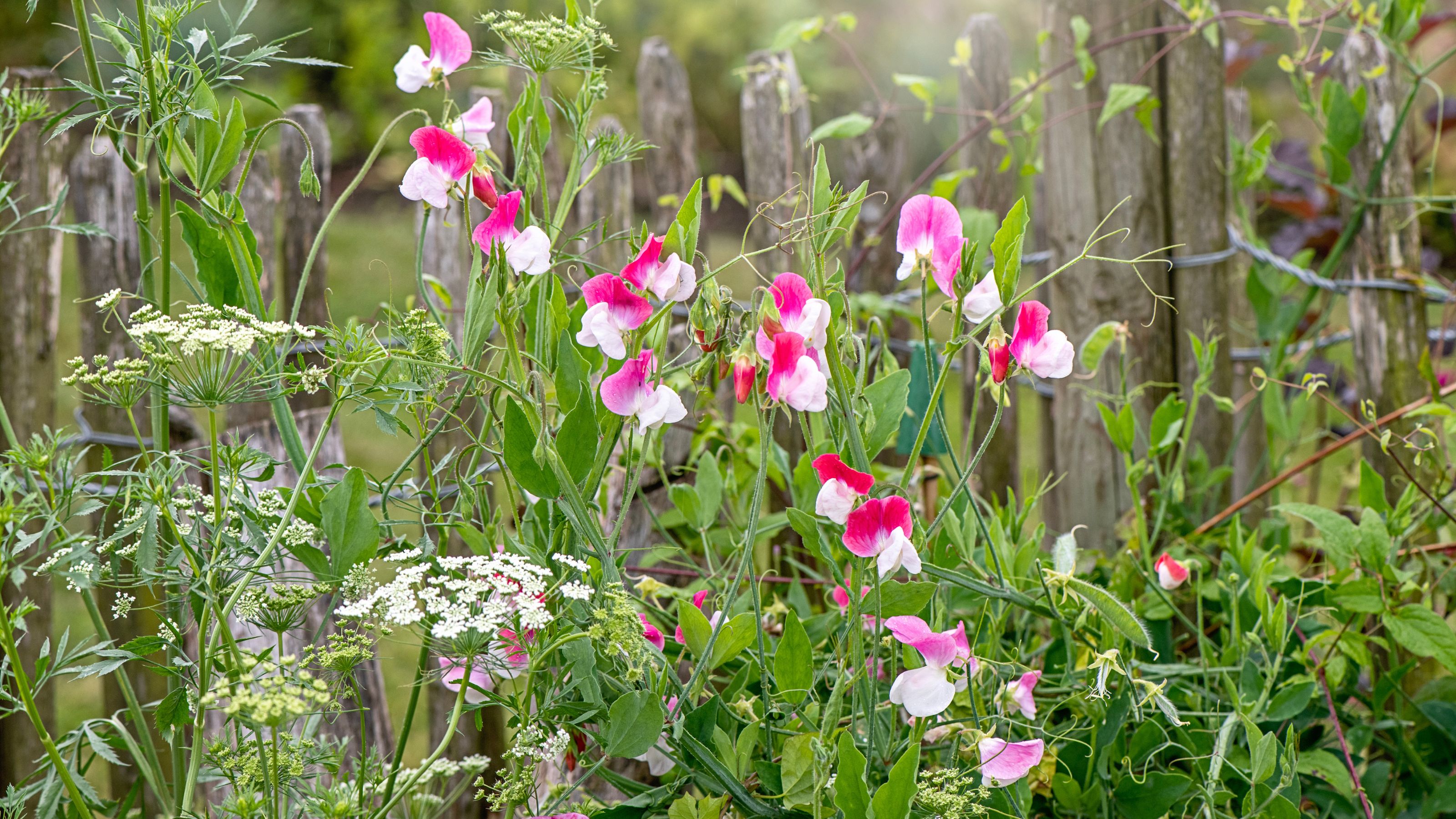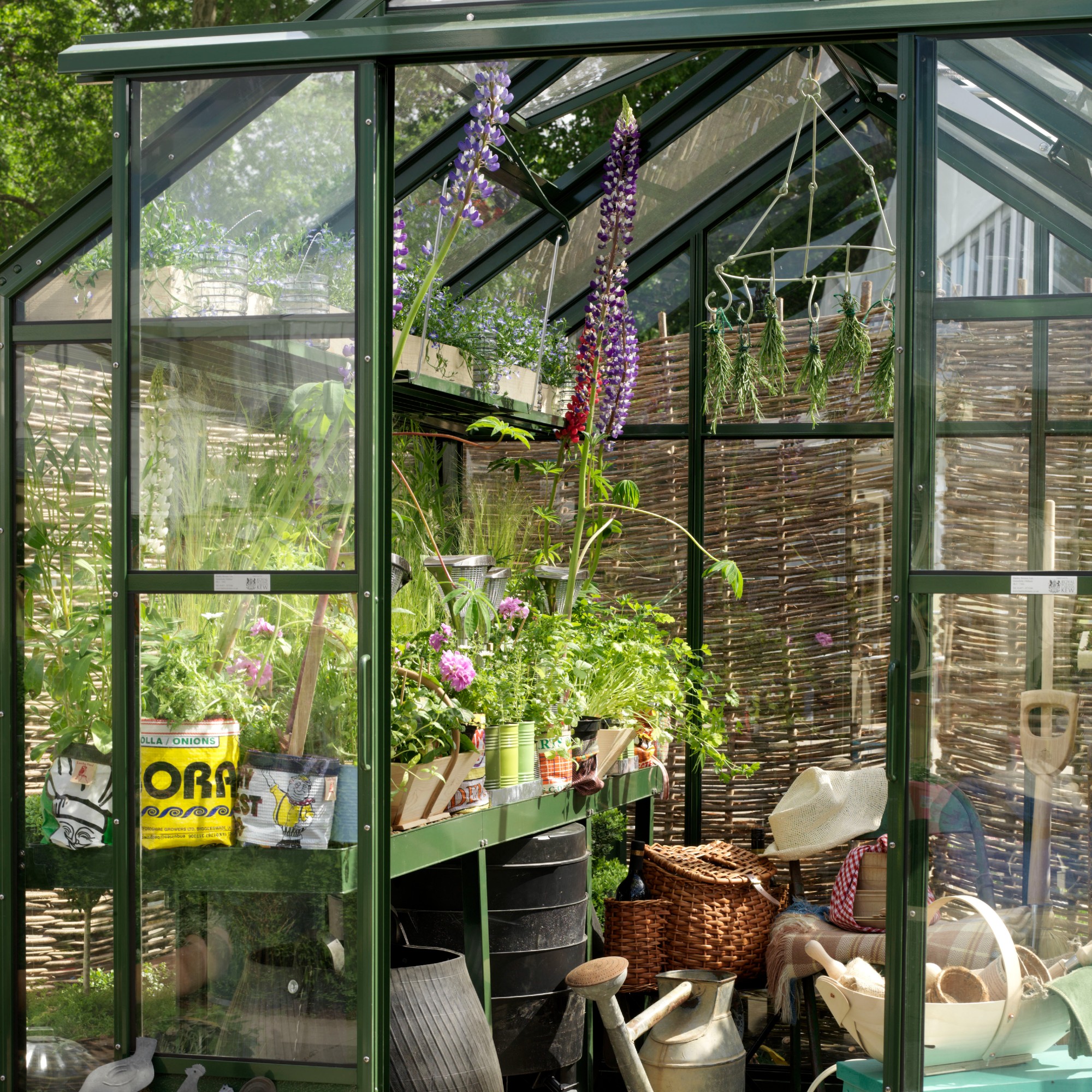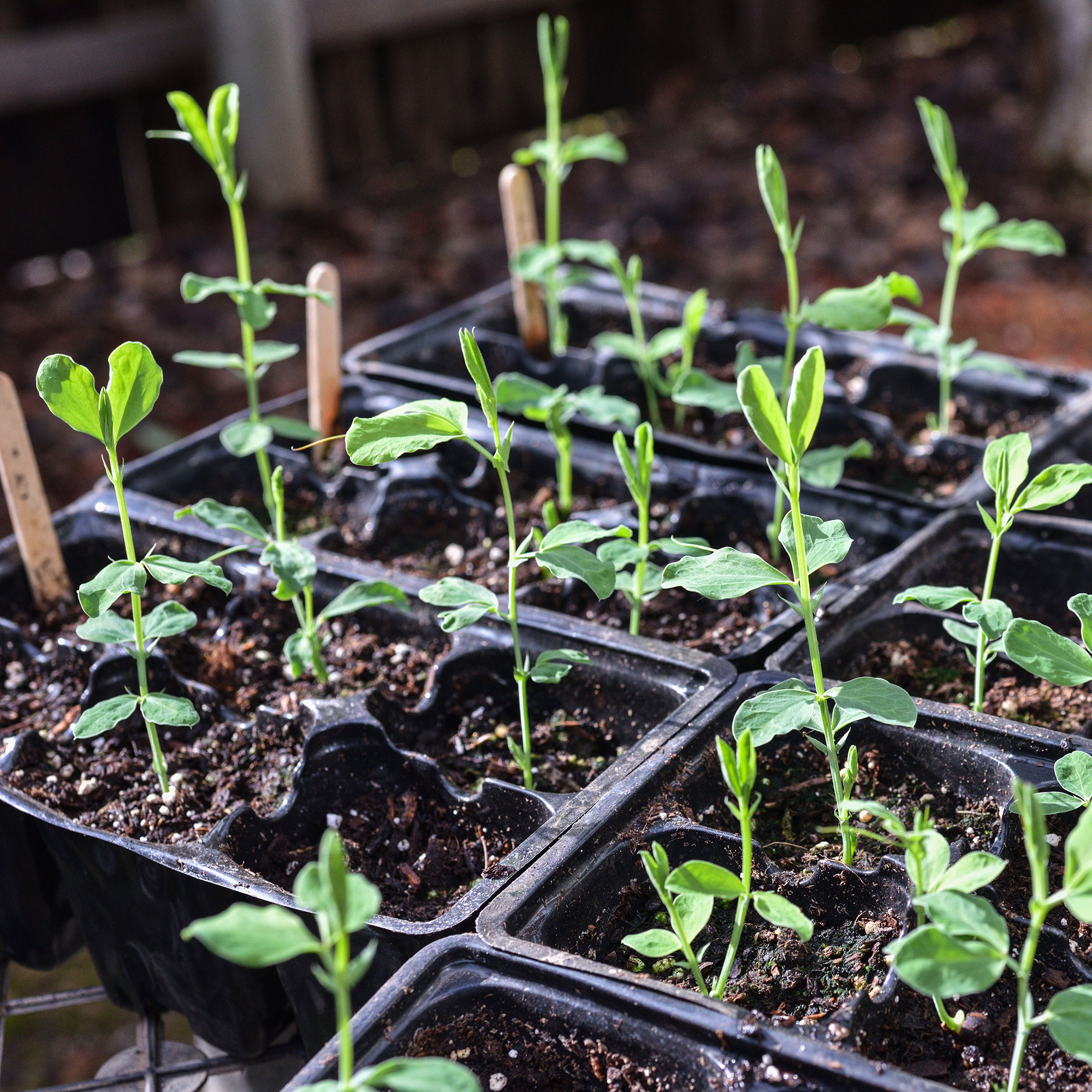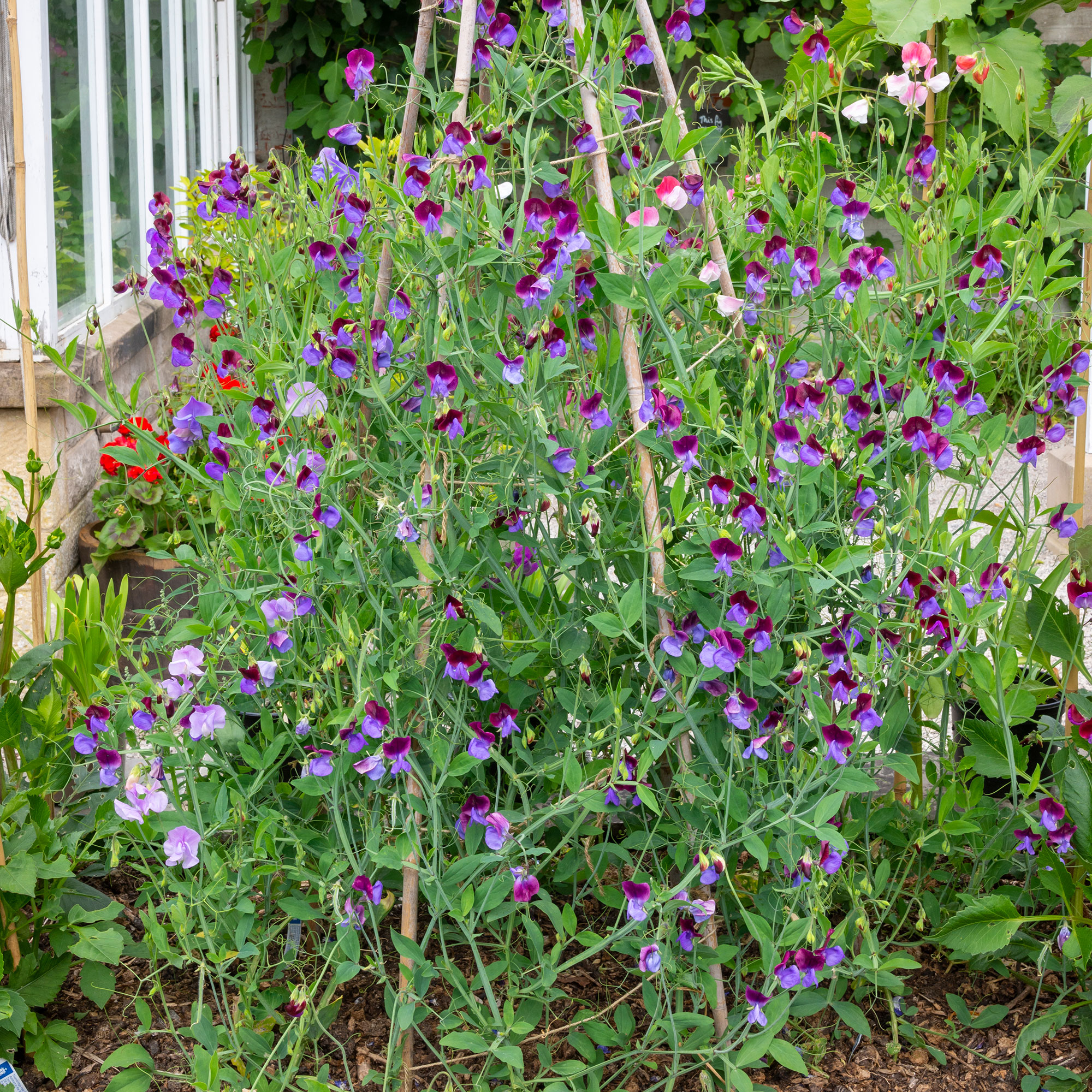How to grow sweet peas from seed - fill your garden with colourful blooms this summer
How to sow and grow these stunning and fragrant blooms


It’s no wonder that so many people love the sight of sweet peas in their summer gardens, with their delicate flowers, stunning fragrances, and pink and purple hues. But if you’re not on board the sweet pea train just yet, you’ll be happy to know that it’s very easy to learn how to grow sweet peas from seed, and now is the perfect time to do it.
While you could bring your cottage garden idea to life by buying fully-grown sweetpeas from your local garden centre, growing your garden blooms from seed has so many benefits. Not only will this task save you money, but it’ll also allow for better variety and choice of colours while giving you the chance to tend and nurture a summer garden idea you’ve created.
But with their hard seed coating and high-climbing antics, growing sweet peas from seed can be fiddly. That’s why we’ve put together a foolproof step-by-step guide to help you fill your garden with these beautiful flowers.
How to grow sweet peas from seed
Sweet peas are certainly a sweet addition to your garden. If you're wondering when to sow sweet peas now is the perfect time to get stuck in and learn how to grow sweet peas from seed.
What you’ll need
- Sweet pea seeds - like these Suttons Sweet Pea Seeds from Amazon
- Seed trays - like this Verve Grey Seed Tray from B&Q
- Potting compost
- Kitchen roll
- Water
- Knife
Step-by-step
1. Choose the right time
It’s important to note that you can grow sweet peas from seed by planting them directly in the ground. If you want to do this, it’s generally best to do this between April and May to ensure that the ground isn’t frozen.
However, if you’re eager to get started on your summer garden and don’t want to wait any longer, you can sow sweet pea seeds in pots anytime between October and April. You just need to make sure that you do so undercover and away from direct frost to give them the best chance of germination.
If you’re sowing sweet pea seeds in trays during the winter months, keeping them indoors and on a sunny windowsill will suit them perfectly. If you’re sowing them in late winter or early spring, however, you can get away with keeping them in a cold frame or greenhouse.
2. Soak your seeds
Sweet peas are known for being hardy annuals, but one thing you might not know about this colourful flower is that the seeds are extremely hard. In fact, their hard seed coat means that it’s harder to grow sweet peas from seed if you don’t give them a helping hand.
Oliver Hill, gardening expert and founder of Garden List, says, ‘Sweet pea seeds have a hard outer coating, so it's beneficial to soak them in water for 24 hours before planting. This softens the seed coat and speeds up germination.’
Alternatively, you could lay your seeds onto some damp kitchen roll for at least 24 hours. And if you want to give your sweet pea seeds another extra push in the right direction, you could also use a knife to make a small cut in the coating of the seed to help it absorb water more efficiently.

3. Prepare your seed trays and sow
When your sweet pea seeds are ready to go, it’s time to prepare your pots for sowing. So, fill your seed tray with a high-quality, peat-free, and multi-purpose compost and then give it a light sprinkling of water to ensure a damp environment for the seeds.
Then, sow two seeds per pot, with Oliver suggesting to ‘Sow the seeds about 1-2 cm deep.’
Don’t worry if you don’t have any seed trays, though. You can also grow sweet peas from seed in an empty toilet paper roll. In fact, some experts advise against using root trays altogether, as toilet rolls are bigger and ultimately give your seedlings space to grow.
4. Water when seedlings appear
When the seeds are sown, you may feel inclined to water them. However, holding off until the next stage will work in your favour as this will promote root growth under the surface rather than stem growth above the surface.
In general, it should then take around 10-14 days for your sweet pea seedlings to poke through the compost. When this happens, you can finally water them for the first time and continue to do so whenever you spot that the soil is dry.

5. Pinch the growing shoots
As the sweet pea seedlings continue to grow, you could just leave them to it. However, experts suggest getting your hands involved in this next step to encourage the growth of the side shoots. By doing this, you should be left with a much fuller (rather than a taller) plant.
Steve Chilton, garden expert at LeisureBench says, ‘I recommend pinching out their tips when they reach around 8-10cm, just to encourage more growth.’
You can do this with your index finger and thumb, but just be careful you don’t pinch them so hard that they break.

Steve is a passionate and knowledgeable garden expert with several years of experience within the field and has developed strong expertise for all things nature and plants. Steve is a keen educator and loves to share this knowledge with others. He strives to simplify complex garden practices and encourage eco-friendly gardening.
6. Plant your sweet peas
‘Once the seedlings are strong enough and the risk of frost has passed, plant them out in their final position,’ says Oliver. ‘They prefer a sunny spot with well-drained soil, and you should space them about 10-20 cm apart.’
Just remember that sweet peas are climbers, so can be trained to grow up fences or trellises. Because of this, it’s also a good idea to plant your sweet peas with some kind of support, like a bamboo cane or an obelisk trellis.
When planted, continue to water your sweet peas throughout the spring and summer months to ensure a happy and healthy flowering period from June to July.

FAQs
What is the best month to plant sweet peas?
Sweet peas are extremely hardy, which allows for some flexibility when it comes to planting. However, it’s generally considered best to sow sweet pea seeds directly into the ground between April and May.
If you’re sowing in containers before planting into the ground, you can do this anytime between October and April.
Then, you can plant your seedlings into the ground in March or April.
How do you start sweet peas from seed?
To start sweet peas from seed, you need to lay them out on a damp paper towel for at least 24 hours. This will help to soften the hard coating and allow the seed to absorb water.
If you wanted to, you could also make a small cut in the seed to allow for extra absorption.
Do you soak sweet pea seeds before planting?
Yes! It’s generally considered to be best practice to soak sweet pea seeds before planting, as this will allow them to absorb water and speed up the germination process.
So, have you sown your sweet pea seeds yet?
Get the Ideal Home Newsletter
Sign up to our newsletter for style and decor inspiration, house makeovers, project advice and more.

Lauren Bradbury has been the Content Editor for the House Manual section since January 2025 but worked with the team as a freelancer for a year and a half before that. She graduated with a Bachelor’s degree in English and Creative Writing from the University of Chichester in 2016. Then, she dipped her toe into the world of content writing, primarily focusing on home content. After years of agency work, she decided to take the plunge and become a full-time freelancer for online publications, including Real Homes and Ideal Home, before taking on this permanent role. Now, she spends her days searching for the best decluttering and cleaning hacks and creating handy how-to guides for homeowners and renters alike, as well as testing vacuums as part of her role as the Ideal Home Certified Expert in Training on Vacuums, having spent over 110 hours testing different vacuum models to date!
-
 Will a conservatory add value to your home and how can you maximise it?
Will a conservatory add value to your home and how can you maximise it?This is what the pros say
By Amy Reeves
-
 I’ve been looking for a new signature scent for my home and The White Company's new fragrance is the exact summer holiday smell I needed
I’ve been looking for a new signature scent for my home and The White Company's new fragrance is the exact summer holiday smell I neededSantorini smells fresh, summery and sophisticated
By Kezia Reynolds
-
 How to remove algae from garden walls in five steps – and the cleaning product experts rave about for tackling it fast
How to remove algae from garden walls in five steps – and the cleaning product experts rave about for tackling it fastExperts share their top tips for getting garden walls algae-free
By Katie Sims